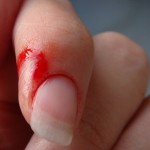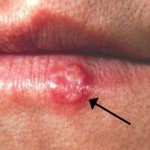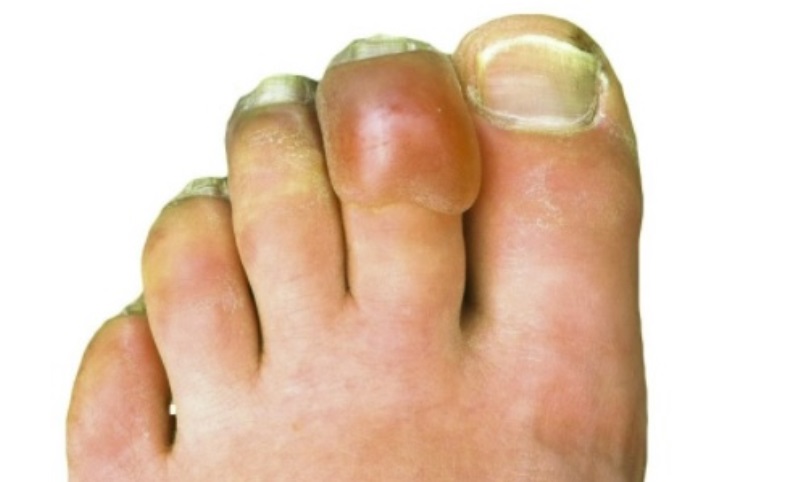Ingrown toenails or onychocryptosis is a condition in which the corners of toenails grow into the adjacent flesh, piercing into the skin surrounding the toe and causing a lot of pain and discomfort. The ingrowth can be a result of wearing tight-fitting footwear, improper trimming of nails, a nail injury or unusual curvature of toenails. The symptoms include persistent pain, swelling and inflammation. In some cases, the redness and swelling can aggravate into a full-blown infection characterized by itching, throbbing pain and a watery discharge tinted with blood accompanied by draining pus.

Image source: lovethispic
Home remedies for ingrown toenail
There are multiple home remedies for ingrown toenail but it is advisable to refrain from treating the condition at home if the situation has spiraled into an infectious case or the patient suffers from diabetes, poor blood circulation to the feet or nerve damage in the feet. Not only are patients suffering from the aforementioned conditions more susceptible to developing ingrown toenails but they also need to steer clear of home remedies for ingrown toenail. In such cases, it is recommended that the patient see a doctor lest the infection spread and create further complications. For the rest who have deciphered the signs early, the following home remedies for ingrown toenail can come in handy:
Suggested read: 10 superbly effective home remedies to get rid of dry, rough hands
1. Warm water soak
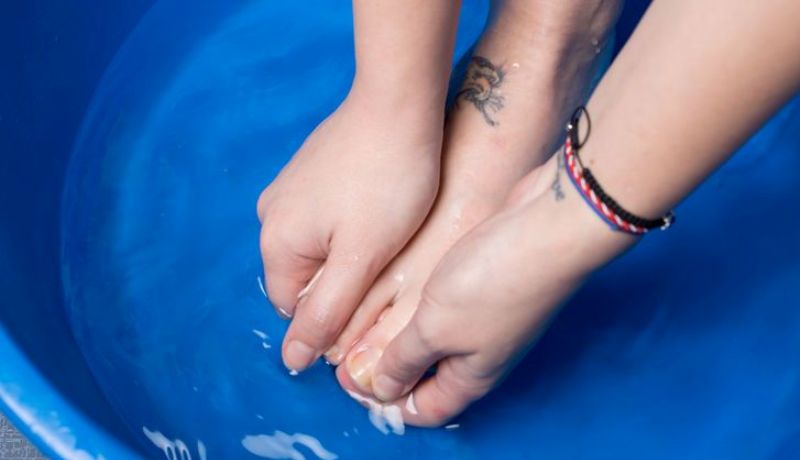
Image source: wikihow
Warm water soaks can help in alleviating the pain and causing a considerable reduction in the pain, swelling and tenderness caused by the ingrowth. Filling a tub with warm water and soaking one’s feet in it for 15-20 minutes, 3-4 times a day can produce significant results.
2. Cotton wedge under the nail
A warm water soak can be followed up with placing a cotton wedge strategically under the affected toenail to quicken the healing process and help it grow above the skin. After drying one’s feet post the warm water soak, one must use a pair of blunt tweezers to lift the affected nail and place the cotton wedge between the ingrowth and the nearby skin. Of course, you must replace the cotton wedge every time you soak your feet to mitigate the risk of an infection. Remember not to push the cotton roll farther than the swollen skin allows. It is important to note that experiencing initial pangs of discomfort and pain is normal. The pain shall reduce gradually, with every subsequent soak-and-wedge sequence.
3. Epsom salt
Epsom salt or magnesium sulphate is an effective remedy for ingrown toenail. You need to add about 1tbsp of Epsom salt to your warm water tubs and soak your feet in it for 15-20 minutes, 3-4 times a day to see significant results. Not only does the process help to soften the skin around the ingrowth to draw out the nail but brings down the pain and swelling to naught.
4. Apple cider vinegar

Image source: Google, copyright-free image under Creative Commons License
The antiseptic, mildly acidic and anti-inflammatory nature of apple cider vinegar helps combat the risk of infection whilst helping to relieve the common symptoms. There are two ways of using apple cider vinegar to quicken healing. You can either add equal amounts of raw, unfiltered apple cider vinegar and warm water in a tub and soak your feet in it for about 20-30 minutes, 3-4 times a day or soak a cotton ball in the raw apple cider vinegar solution, place it on the infected area and bandage it for a couple of hours.
Suggested read: All you need to know about taking care of your hands to counter aging
5. Hydrogen peroxide
Hydrogen peroxide acts as a disinfectant that helps reduce the risk of infection and relieves the pain. Mixing about half a cup of peroxide to a warm water soak and repeating the soaking process twice daily can cause significant improvement.
6. Turmeric

Image source: Google, copyright-free image under Creative Commons License
Turmeric has always been known for its pain-relieving properties. Curcumin, a chemical compound in turmeric, has antiseptic and anti-inflammatory properties that help mitigate the chances of infection. Make a paste of turmeric powder and mustard oil, apply it over the infected area and cover it with a bandage. Repeat the process 2-3 times daily for two weeks. Alternatively, you could use a turmeric antibiotic cream or orally ingest turmeric by bringing it to a boil in milk and drinking it twice daily.
7. Tea tree oil
You can also bank on the antiseptic nature of tree tea oil to combat infection and relieve the pain. Add 1-2 drops of tea tree oil in a carrier oil, such as olive oil or coconut oil and apply it on the infected area. You can cover the same with a bandage. You need to repeat this thrice daily until you start to see improvement.
8. Indian lilac
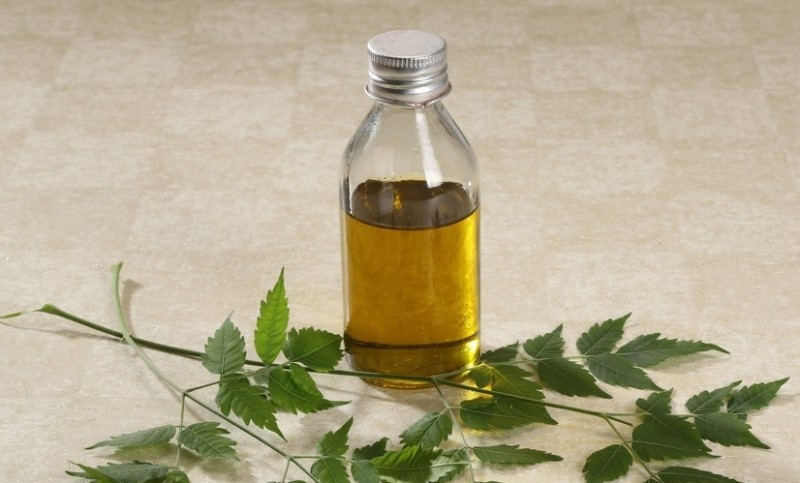
Image source: Google, copyright-free image under Creative Commons License
Indian lilac or neem has long been known for its anti-bacterial, anti-inflammation and pain-relieving properties. Bring a handful of neem leaves to a boil in about four cups of water. Strain the solution and allow it to cool for a bit. Soak the affected toe in the solution for 10-15 minutes. Do the same twice daily. You may also apply neem oil to the affected area and leave it on overnight to begin to see improvement.
Suggested read: All you need to know about how to do a French manicure at home
Additional tips:
- Trim your nails straight across and start out at the edges, proceeding toward the middle
- File your nails regularly to rule out sharp edges
- Use a quality nail clipper and filer
- Do not trim your toe nails too short
- Choose your footwear wisely
- If you have developed the condition already, make room for open-toed sandals that allow your feet to breathe
- Avoid high heels to relieve pressure on the toes
- Do not wear tight-fitting footwear that puts undue pressure on your toes
- Keep your feet dry, except when soaking
- Scrub your feet biweekly with a pumice stone to prevent the formation of hard skin
- If the problem persists for a couple of weeks and/or begins to show signs of infection, you must visit a doctor
We care about your happy feet!
Featured image source: lovethispic



